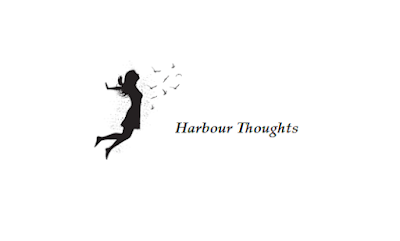March
By Duncan Campbell Scott
Now swoops the wind from every coign and crest;
Like filaments of silver, ripped and spun,
The snow reels off the drift-ridge in the sun;
And smoky clouds are torn across the west,
Clouds that would snow if they had time to rest;
The sparrows brangle and the icicles clash;
The grosbeaks search for berries in the ash;
The shore-lark tinkles while he plans his nest.
Now in the steaming woods the maples drip,
And plunging in with the last load of sap,
Beyond the branches through a starry gap,
The driver sees the frail aurora flow,
And round the sinking Pleiads bend and blow;
A rosy banner and a silver ship.
Poem Analysis:
Duncan Campbell Scott’s sonnet “March” is a finely crafted poetic celebration of seasonal transition, balancing the last grasp of winter with the early stirrings of spring. Through richly textured imagery and controlled form, Scott portrays March as a month of tension and transformation, full of movement, vitality, and natural contradiction.
Overview and Structure
The poem is a Petrarchan sonnet, composed of an octave (the first eight lines) and a sestet (the final six). This structure suits Scott’s theme well: the octave establishes the chaotic, wind-swept final throes of winter, while the sestet gently shifts toward the awakening rhythms of spring and cosmic beauty.
The volta (or thematic turn) occurs at line 9, marking a subtle change in perspective — from a frenetic natural world to a calmer, more introspective moment in the woods, infused with mystery and wonder.
Analysis of the Octave (Lines 1–8)
Now swoops the wind from every coign and crest;Like filaments of silver, ripped and spun,The snow reels off the drift-ridge in the sun;And smoky clouds are torn across the west...
The poem opens with dynamic and violent movement. Words like “swoops,” “ripped,” “spun,” and “torn” suggest a world in motion, reflecting March’s reputation for wild, unpredictable weather. The “wind” is personified as it “swoops,” and the snow is likened to “filaments of silver,” both delicate and chaotic, “reeling” in the sunlight.
The sparrows brangle and the icicles clash;The grosbeaks search for berries in the ash;The shore-lark tinkles while he plans his nest.
Amid the swirling winds and snow, animal life stirs. “Brangle,” a seldom-used verb, connotes squabbling or bickering, which gives texture to the sparrows' actions. Meanwhile, icicles “clash” like swords — a startling image that again merges violence with beauty. Yet among this restlessness, birds like the shore-lark and grosbeaks are shown already planning for spring — a hint of continuity and renewal amidst the chaos.
Analysis of the Sestet (Lines 9–14)
Now in the steaming woods the maples drip,And plunging in with the last load of sap,Beyond the branches through a starry gap,The driver sees the frail aurora flow...
The sestet shifts to a quieter, more intimate scene. “Steaming woods” and “maples drip” evoke warmth, melting, and the sap run that marks maple sugaring season — a quintessential early spring event in Canada. This part of the poem invokes touch, sight, and sound in a gentler register.
The driver of a sap-laden sled is momentarily transfixed by the cosmos, seeing the “frail aurora” and the Pleiades, mythic stars associated with winter’s end. There’s a contrast between the labor of daily life (hauling sap) and the transcendence of the night sky, uniting the earthly and the celestial.
A rosy banner and a silver ship.
The final line, with its metaphoric imagery, suggests both the northern lights and imaginative transport. The “rosy banner” and “silver ship” are possibly metaphors for the aurora and Pleiades but also carry symbolic weight: banners of victory, ships of journey, signs of new beginnings and movement into spring.
Themes
- Transition and Duality: March is inherently a month of in-betweenness — neither winter nor spring. Scott captures this with contrasting images: snow and sun, wind and warmth, birds nesting while icicles still “clash.” The poem lives in this duality.
- Nature’s Activity and Restlessness: From sparrows brangling to snow reeling, the natural world is full of tension. It’s a landscape of motion, noise, and change, echoing how March heralds upheaval before renewal.
- Human in Nature: The lone figure — the sap driver — is a quiet presence amid the natural drama. His moment of looking upward bridges labor and awe, the mundane and the mythic, anchoring the poem in human experience.
- Beauty in Change: Though the poem opens with turbulence, it ultimately frames change as beautiful — in auroras, stars, maple sap, and the gestures of nesting birds. March is not just violent transition, but the cusp of wonder and rebirth.
Style and Language
Scott’s diction is formal, vivid, and precise. Archaic or rare words like “coign,” “brangle,” and “tinkle” lend the poem a lyrical antiquity, while images are sensory and exact. The use of alliteration (“filaments of silver,” “steaming woods”) and sonic texture (the “clash” of icicles, the “tinkle” of the shore-lark) give the poem a distinct musicality.
His syntax is controlled, flowing naturally through the 14 lines without seeming overly constrained, a testament to his mastery of the sonnet form.
Duncan Campbell Scott’s “March” is a sonnet of atmospheric contrast and subtle beauty, evoking the wild edge of winter’s end and the quiet promise of spring. By embedding human presence within a restless natural world, the poem speaks to a universal moment of seasonal and symbolic transformation.
Its final vision — a banner of light and a ship of stars — leaves the reader not just witnessing change, but carried along with it, toward something warmer, vaster, and unknown.
